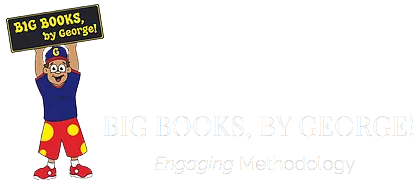Big Books, Big Fun: 10 Engaging Activities for Kids’ Storytime
Welcome to the world of big books for kids – where the pages are larger, and the fun is even bigger! In this age of screens and digital distractions, it’s vital to find creative ways to engage young minds in reading and storytelling. Big books offer a unique opportunity to do just that. They aren’t just larger versions of regular books; they’re gateways to interactive and participative learning. In this post, we’ll explore 10 innovative activities that can transform storytime into an exciting and educational experience for children. Get ready to turn the pages of these oversized wonders and dive into a world of interactive storytelling!
1. Role-Play Read-Along
Big books for kids aren’t just for reading; they’re perfect for acting out stories! Choose a big book with distinct characters and encourage the children to take on the roles of these characters as they read. They can use their voices, facial expressions, and simple props to bring the story to life. This activity not only makes reading fun but also helps in developing empathy and understanding of different characters.
2. Storytelling with Puppets
Transform your big book reading session into a puppet show. Use puppets that represent the characters in the book. This method allows children to visualize the story better and makes the storytelling session more engaging. It also encourages shy children to express themselves through the puppets.
3. Interactive Soundscapes
Create a soundscape for the story you’re reading from a big book. Encourage the children to make sound effects that correspond with the action or setting in the story. If it’s raining in the story, they can tap their fingers against the floor to mimic raindrops. This sensory activity enhances the reading experience and keeps the kids thoroughly engaged.
4. Artistic Storyboards
After reading a story from a big book for kids, ask the children to create a storyboard or a series of drawings that represent the main events of the story. This is a great way to encourage comprehension and recall. Plus, it allows children to express their understanding and perspective of the story through art.
5. Story Sequencing Games
Cut out pictures or phrases from the story and mix them up. Have the children arrange them in the correct order. This activity with big books for kids is fantastic for developing sequencing skills and understanding story structure.
6. Interactive Question and Answer Sessions
While reading a big book, pause at key moments and ask predictive or reflective questions. This keeps the children engaged and thinking critically about the story. It’s a great way to develop their analytical skills and foster a deeper understanding of the narrative.
7. Vocabulary Building
Pick out some new or interesting words from the big book and discuss them with the kids. Use these words in sentences or create a fun word game. This not only enhances their vocabulary but also makes them more curious about words and their meanings. For more details visit us at https://www.bbbg.org/.
8. Create Your Big Book
Encourage the children to create their big book. They can write a short story and illustrate it. This activity fosters creativity and gives them a sense of accomplishment. Seeing their work in a big book format will be an exciting and rewarding experience for them.
9. Sensory Exploration
Use the big book as a starting point for a sensory exploration activity. If the story is about a garden, bring in real leaves, flowers, or soil for the children to touch and smell. This multisensory approach helps children connect more deeply with the story and stimulates various senses.
10. Story Extension Activities
After reading a story from a big book for kids, come up with activities that extend the story. If the story was about animals, you could have a day where kids come dressed as their favorite animal from the book. Such activities extend the learning beyond the book and into real life.
Conclusion
Big books for kids are not just oversized reading materials; they are powerful tools that can transform storytelling into an immersive and interactive experience. By incorporating these 10 creative activities, you can enhance children’s engagement, comprehension, and enjoyment of stories. These activities not only make storytime fun but also contribute significantly to a child’s cognitive and social development. So, grab a big book, and let’s turn each page into an adventure of learning and fun!
Read More:
Unlock Imagination with Big Books
